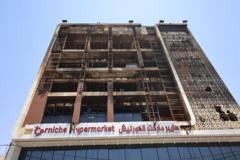The tragic crash of Jeju Air Flight 2216 on December 29 continues to unfold, as a newly obtained partial transcript details the pilots' emergency communications with air traffic control just moments before disaster struck.
Pilots Explored Emergency Landing Options Before Tragic Jeju Air Crash

Pilots Explored Emergency Landing Options Before Tragic Jeju Air Crash
Partial transcript reveals critical minutes leading up to the catastrophic incident that claimed 179 lives in South Korea.
The pilots of Jeju Air Flight 2216 communicated their landing strategy to air traffic control prior to the crash that resulted in the deaths of 179 people in South Korea. On that fateful day, the crew reported a bird strike and declared a mayday as they approached Muan International Airport. A partial transcript, recently obtained, shows that they initially planned to turn left while landing but later sought to approach from the right. When those maneuvers proved unsuccessful, air traffic control proposed an alternate landing approach from the opposite direction, which the pilots accepted.
The Boeing 737-800 ultimately crash-landed on its belly, overran the runway, and collided with a concrete structure, leading to a devastating fireball that engulfed the aircraft. Only two passengers, both flight attendants situated at the back, survived the incident.
This catastrophic event is being labeled as the deadliest plane crash in South Korea's aviation history, and the full investigation into its cause is ongoing. Investigators are particularly focused on the last crucial four minutes before the crash, during which the plane's flight recorders ceased functioning, making the pilots' exchanges with air traffic control all the more important.
Despite the insights gleaned from the transcript, it notably lacks details concerning the aircraft’s engine performance and electrical systems, key components under scrutiny by officials. The circumstances leading to the black boxes' failure and the absence of the plane's landing gear are still unclear.
The transcript was presented to the victims' families by representatives of the investigative board, with portions omitted to protect privacy. While officials have not made the full transcript public, requests for comment from the board have gone unanswered.
The Boeing 737-800 ultimately crash-landed on its belly, overran the runway, and collided with a concrete structure, leading to a devastating fireball that engulfed the aircraft. Only two passengers, both flight attendants situated at the back, survived the incident.
This catastrophic event is being labeled as the deadliest plane crash in South Korea's aviation history, and the full investigation into its cause is ongoing. Investigators are particularly focused on the last crucial four minutes before the crash, during which the plane's flight recorders ceased functioning, making the pilots' exchanges with air traffic control all the more important.
Despite the insights gleaned from the transcript, it notably lacks details concerning the aircraft’s engine performance and electrical systems, key components under scrutiny by officials. The circumstances leading to the black boxes' failure and the absence of the plane's landing gear are still unclear.
The transcript was presented to the victims' families by representatives of the investigative board, with portions omitted to protect privacy. While officials have not made the full transcript public, requests for comment from the board have gone unanswered.






















